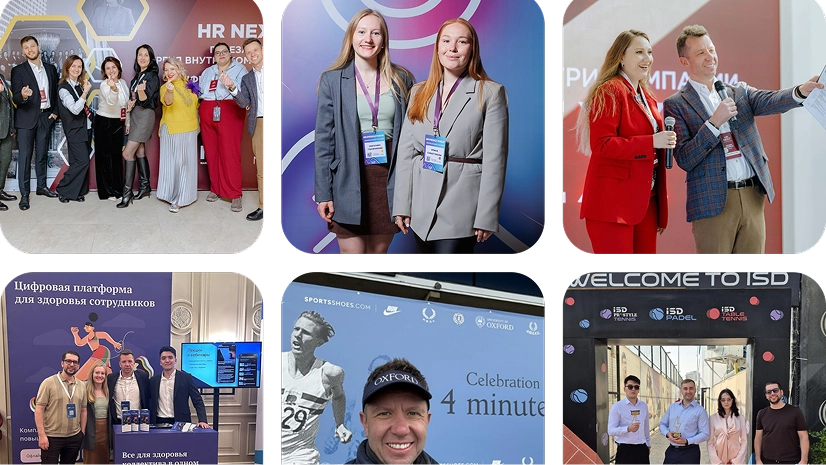Employee burnout is a pervasive issue in today's fast-paced work environment, affecting organisations across all industries. As an HR professional, understanding and addressing this challenge is crucial for maintaining a healthy, productive workforce. In this comprehensive guide, we'll explore the nuances of employee burnout and provide you with five powerful strategies to combat it effectively.
Understanding Employee Burnout
You can’t reduce employee burnout without understanding it. It goes far beyond typical workplace stress. It's a state of chronic physical and emotional exhaustion that can have severe consequences for both individuals and organisations. The World Health Organization recognizes burnout as an occupational phenomenon, characterising it by three dimensions:
- Feelings of energy depletion or exhaustion
- Increased mental distance from one's job or feelings of negativism or cynicism related to one's job
- Reduced professional efficacy
Recognizing these aspects is crucial for HR professionals to effectively address burnout in their organisations.
The Impact of Employee Burnout on Organisations
The effects of burnout extend beyond individual employees, significantly impacting organisational performance:
- Decreased productivity and quality of work
- Increased absenteeism and turnover rates
- Negative impact on team morale and collaboration
- Higher healthcare costs due to stress-related illnesses
- Potential damage to company reputation and employer brand
Given these far-reaching consequences, addressing employee burnout should be a top priority for HR departments.
Signs of Burnout and its symptoms
Early detection of burnout is key to effective intervention. HR professionals should be trained to recognize the following signs of burnout symptoms:
- Persistent fatigue: Employees may complain of feeling tired all the time, regardless of sleep or rest.
- Cynicism towards work: A noticeable shift from enthusiasm to cynicism or detachment regarding work tasks and company goals.
- Decreased efficiency: A decline in the quality or quantity of work produced, often despite working longer hours.
- Physical symptoms: Frequent headaches, digestive issues, or other unexplained physical ailments.
- Workplace anxiety: Increased stress or anxiety related to work tasks or the work environment.
- Feelings of helplessness: Employees may express a lack of control or influence over their work situation.
- Lack of motivation: A noticeable decrease in engagement and initiative-taking.

Root Causes of Employee Burnout
Understanding the underlying causes of burnout is essential for developing effective prevention strategies:
- Excessive workload: Unrealistic expectations and chronic overwork can lead to exhaustion.
- Lack of control: Feeling unable to influence decisions that affect one's work can be demoralising.
- Insufficient rewards: When recognition (both financial and non-financial) doesn't match effort, employees may feel undervalued.
- Poor work-life balance: Difficulty in managing personal and professional responsibilities can lead to chronic stress.
- Toxic work environment: Negative workplace relationships or culture can contribute significantly to burnout.
- Unrealistic deadlines: Constantly working under pressure to meet tight deadlines can be mentally and physically draining.
- Lack of social support: Feeling isolated or unsupported at work can exacerbate stress and lead to burnout.
The Role of HR in Employee Burnout Prevention
HR departments are uniquely positioned to create employee burnout solutions to address through comprehensive strategies that target both prevention and intervention. Here are five powerful strategies on how to deal with employee burnout:
Creating a Supportive Work Environment
A positive work environment is fundamental in preventing burnout. HR can foster this by:
- Promoting open communication: Encourage regular check-ins between managers and employees to discuss workload, challenges, and support needs.
- Implementing team-building activities: Foster a sense of community and support among colleagues.
- Developing a culture of recognition: Regularly acknowledge and celebrate employee achievements, both big and small.
- Encouraging work-life integration: Promote a culture where personal time is respected and valued.
Implementing Work-Life Balance Policies
Effective work-life balance policies can significantly reduce the risk of burnout:
- Offer flexible working hours: Allow employees to adjust their schedules to better manage personal responsibilities.
- Provide remote work options: Give employees the flexibility to work from home when possible, reducing commute stress and allowing for better work-life integration.
- Ensure adequate vacation time: Encourage employees to use their vacation days and create a culture where taking time off is seen as essential for well-being.
- Implement "no-email" hours: Set boundaries for after-hours communication to help employees disconnect from work.

Providing Access to Mental Health Resources
Mental health support is crucial in addressing and preventing burnout:
- Offer employee assistance programs (EAPs): Provide confidential counselling services for work-related and personal issues.
- Implement stress management programs: Offer workshops on stress reduction techniques, mindfulness, and resilience building.
- Partner with mental health professionals: Bring in experts to conduct seminars on mental health awareness and coping strategies.
- Provide stress leave options: Develop policies that allow employees to take time off specifically for mental health reasons without stigma.
Encouraging Regular Breaks and Time Off
Promoting a culture that values rest and recovery is essential:
- Encourage micro-breaks throughout the day: Promote the importance of short breaks to recharge and refocus.
- Implement "no-meeting" days: Designate certain days or times for focused work without interruptions.
- Promote the use of vacation time: Actively encourage employees to plan and take their vacation days.
- Address burnout in high-stress sectors: Develop specific strategies for roles prone to burnout, such as healthcare workers or teachers.
Offering Professional Development Opportunities
Career growth and learning opportunities can re-energize employees and prevent burnout:
- Provide training programs: Offer skill development workshops to help employees grow in their roles.
- Support continuing education: Provide resources or time off for employees to pursue relevant courses or certifications.
- Offer clear career progression paths: Help employees visualise their future within the organisation.
- Implement mentorship programs: Connect employees with mentors who can provide guidance and support.
How to Implement These Strategies in your organisation?
To ensure these strategies have maximum impact:
- Conduct regular employee surveys to assess burnout levels and identify specific areas of concern.
- Tailor interventions to your organisation's unique culture and needs.
- Train managers to recognize signs of burnout and provide support to their team members.
- Lead by example: Ensure leadership actively participates in and promotes these initiatives.
- Regularly evaluate the effectiveness of your strategies and be willing to adjust as needed.
A Proactive Approach to Employee Well-being
Reducing burnout in the workplace is a complex issue that requires a multifaceted approach. Remember, addressing burnout is not just about solving a problem – it's about creating a thriving workplace where employees can perform at their best and find fulfilment in their work. As you implement these strategies, keep in mind that change takes time. Be patient, persistent, and always open to feedback from your employees.
If you want to make your first steps in burnout prevention in the workplace – try Stayf! By incorporating Stayf into your wellness strategy, you're not just preventing burnout – you're creating a culture of holistic well-being that unites your team and drives organisational success.
What is the level of wellbeing in your team?
 Take the survey
Take the surveyWellbeing course for HR specialists
.png) Subscribe
Subscribe.png)
.png)
.png)





.png)





